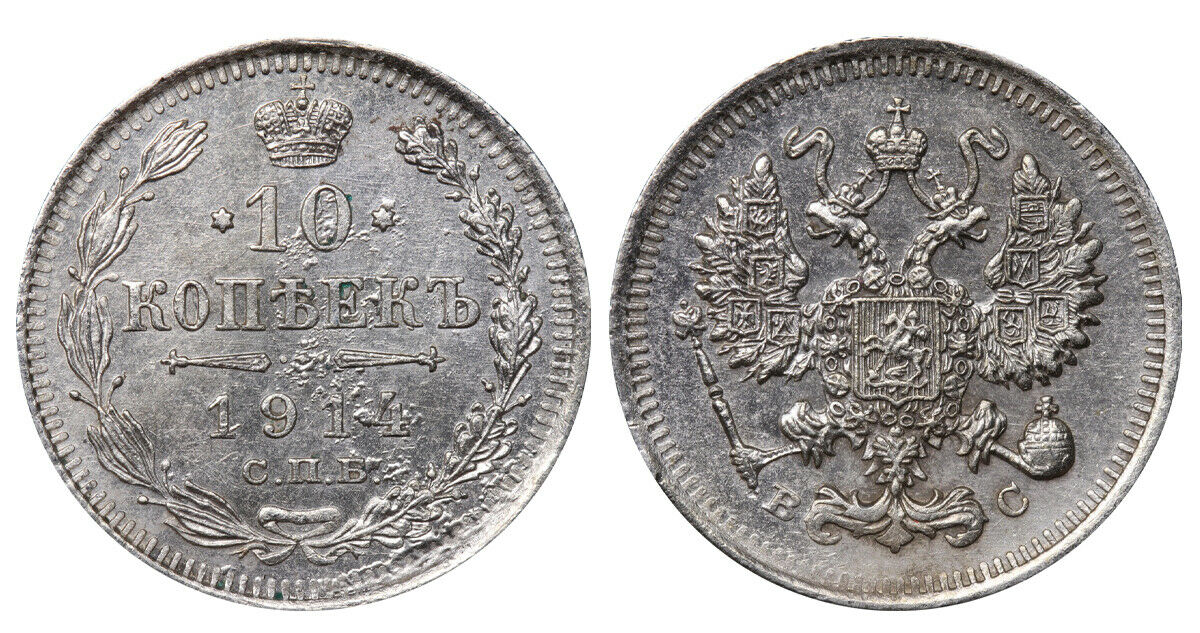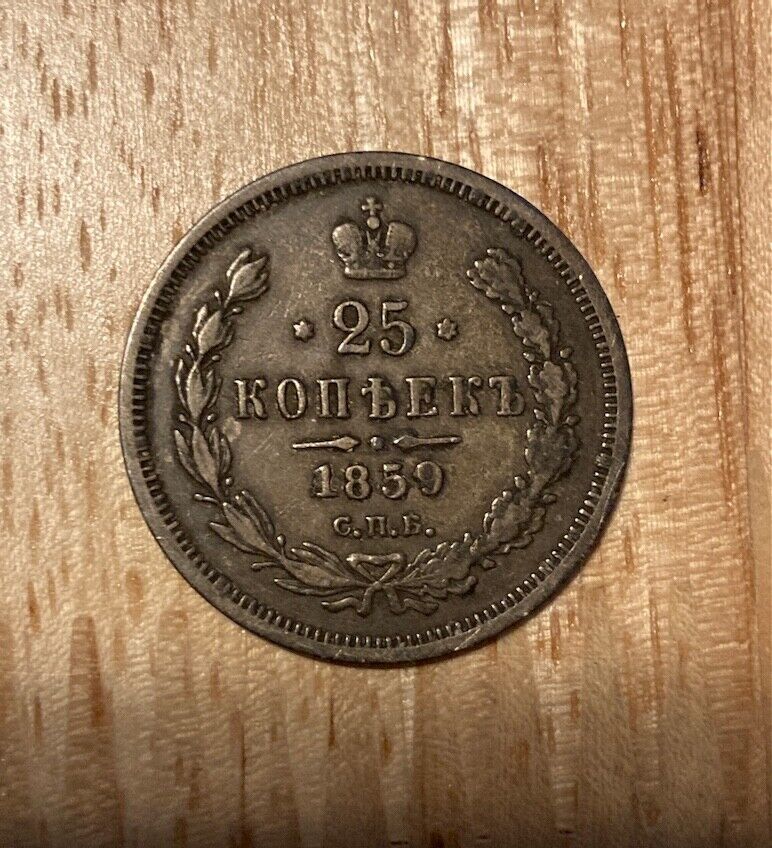-40%
Russian Empire Nikolai II Silver Coin Rare 10 Kopeks 1914 Y # 20a.3 #RI276
$ 7.91
- Description
- Size Guide
Description
Free eBay listing template designed by dewiso.comRussian Empire Nikolai II Silver Coin Rare 10 Kopeks 1914 Y # 20a.3 #RI276
VALUE
10 Kopeks
METAL
Silver 0.500
CATEGORY
Russian Empire Coins / Empire Standard Coinage
RULER
Nicholas II
WEIGHT
1.8 g.
DIAMETER
17.5 mm.
THICKNESS
1.1 mm.
Dear collectors!
We are working for you and it's very important for us, that you can always find and buy in our store exactly what you are looking for and dreaming about. Therefore, if you do not succeed in finding the item, let us know and we will find and order the product you are interested in.
Our company is made by collectors for collectors.
We are selling various items which are related to the collection (coins, banknotes, faleras, antiques, various accessories, specialized literature and much else).
Definitely here you will find a lot of necessary and useful items which you are interested in.
We are always glad to meet you personally and definitely you will find the item you are interested in.
Nicholas II or Nikolai II Alexandrovich Romanov[d] (18 May [O.S. 6 May] 1868 – 17 July 1918), known in the Russian Orthodox Church as Saint Nicholas the Passion-Bearer,[e] was the last Emperor of All Russia, ruling from November 1894 until his abdication in March 1917. During his reign, Russia embarked on a series of reforms including the introduction of civil liberties, literacy programs, state representation, and initiatives to modernize the empire's infrastructure. [1][2][3][4] Ultimately, this progress was undermined by Nicholas's commitment to autocratic rule,[5][6] oppressive policies pursued by his regime,[7][8] and crushing defeats sustained by the Russian military in the Russo-Japanese War[9][10] and World War I.[11][12] By March 1917, public support for Nicholas collapsed and he was forced to abdicate, thereby ending the Romanov dynasty's 300-year rule of Russia. In the years following his abdication, Nicholas was reviled by Soviet historians and state propaganda as a callous tyrant who persecuted his own people while sending countless soldiers to their deaths in pointless conflicts.[13] More recent assessments have characterized him as a well-intentioned, hardworking ruler who proved incapable of handling the challenges facing his nation.[14][15][16]
As Emperor, Nicholas gave support to the economic and political reforms promoted by his prime ministers, Sergei Witte and Pyotr Stolypin, but strong aristocratic opposition prevented them from becoming fully effective. He supported modernization based on foreign loans and close ties with France, but resisted giving the new parliament (the Duma) major roles. He was criticised for his perceived fault in the Khodynka Tragedy, anti-semitic pogroms, Bloody Sunday, the violent suppression of the 1905 Russian Revolution, the repression of political opponents, and his supposed responsibility for defeat in the Russo-Japanese War, which saw the Russian Baltic Fleet annihilated at the Battle of Tsushima, together with the loss of Russian influence over Manchuria and Korea, and the Japanese annexation of the south of Sakhalin Island.
Nicholas signed the Anglo-Russian Entente of 1907, which was designed to counter Germany's attempts to gain influence in the Middle East; it ended the Great Game of confrontation between Russia and the British Empire. He supported Serbia and approved the mobilization of the Russian Army on 30 July 1914. In response, Germany declared war on Russia on 1 August 1914 and its ally France on 3 August 1914,[17] starting the Great War, later known as the First World War. The aristocracy was alarmed at the powerful influence of the despised peasant priest Grigori Rasputin over the czar. The severe military losses led to a collapse of morale at the front and at home, leading to the fall of the House of Romanov in the February Revolution of 1917. Nicholas abdicated on behalf of himself and his son. With his family, he was imprisoned by the revolutionary government, exiled to Siberia, and executed the following year in July 1918.
In 1981, Nicholas, his wife, and their children were recognized as martyrs by the Russian Orthodox Church Outside Russia, based in New York City.[18] Their gravesite was discovered in 1979, but this was not acknowledged until 1989. After the fall of Communism, the remains of the imperial family were exhumed, identified by DNA analysis, and re-interred with an elaborate state and church ceremony in St. Petersburg on 17 July 1998, exactly 80 years after their murder. They were canonized in 2000 by the Russian Orthodox Church as passion bearers.[19] The remains of two more Romanov children, believed to be Grand Duchess Anastasia and Tsesarevich Alexei, were found in 2007 at a second, nearby gravesite, that was also unmarked. They were also identified by DNA analysis. These remains are still waiting to be buried alongside the rest of the family.
Features and further details
Please examine our Photos Carefully. What you see in photos is actual representation of our product.We use only photograph that our store take, we never use stock photos (They only exception is photos from Professional Coin Grading Services companies that Verified our Items). Our items have been photographed with full bright light saturated with contrast for better viewing.
Contact us
We can be contacted at any time through eBay messages if you have any questions, comments or product requests. We will respond to you within 24 hours and do our best to help you out! We encourage our customers to contact us with any questions or concerns! We'd like to be sure you are completely satisfied with your purchase.
Payment
PayPal VISA MASTERCARD AMERICAN EXPRESS DISCOVER
Shipping
Items will be shipped by registred mail with tracking number
Return policy
30 DAYS MONEY BACK BUYER PAYS FOR RETURN SHIPPING
ANTIQUES ECCELLENZE











